.
.
.
.
..
.
ç
Illustration by Jonathan Pointer
Wildlife Scientific Illustration
The Vital Role of Wildlife Art in Advancing
Natural Sciences, Ecology, and Conservation.
Article by Alpha Del Bosque
Wildlife scientific illustration is a visual representation of animals and their natural habitats. For centuries, artists have been fascinated by the beauty of the natural world, capturing the grace, power, and diversity of wildlife. From the earliest cave paintings depicting bison and mammoths to the vibrant works of today’s artists, wildlife scientific illustration has evolved into a powerful tool that bridges the worlds of aesthetics and science.
CHAPTER 1
Introduction to Wildlife Scientific Illustration
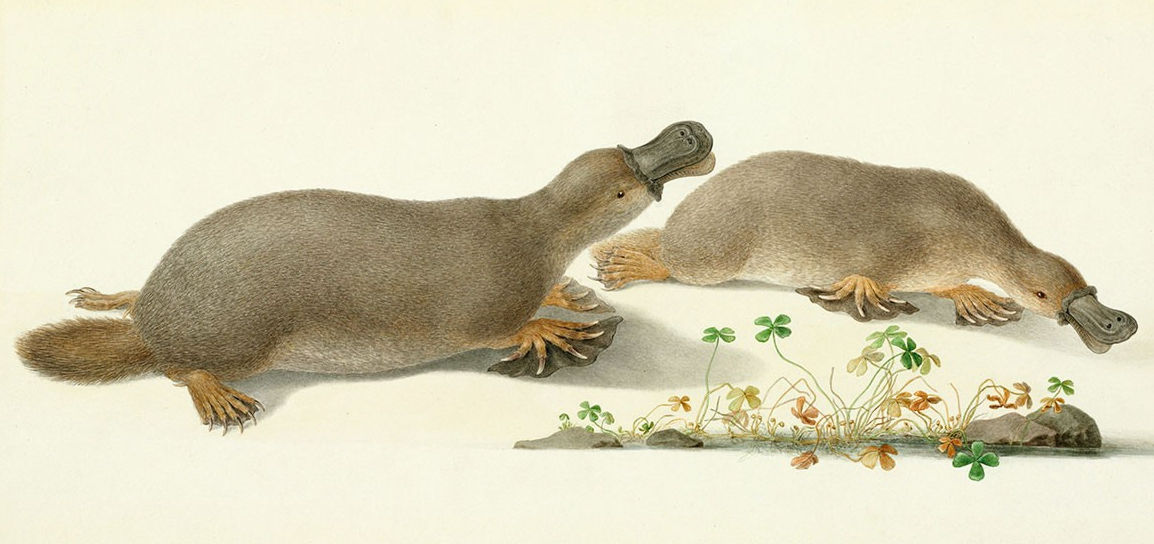
Artist Ferdinang Bauer
Overview of Wildlife Scientific Illustration
Historically, wildlife scientific illustration was primarily seen as a way to celebrate nature’s beauty. However, over time, as exploration and scientific inquiry expanded, the importance of wildlife art grew beyond mere celebration. Little by little, it gained recognition as a critical tool for science, helping to document species, illustrate ecosystems, and communicate complex biological concepts with clarity and precision.
One shining example of the powerful intersection between art and science is the work of the Bauer Brothers, Franz and Ferdinand. These Austrian brothers were renowned for their detailed and precise botanical and zoological illustrations during the late 18th and early 19th centuries.
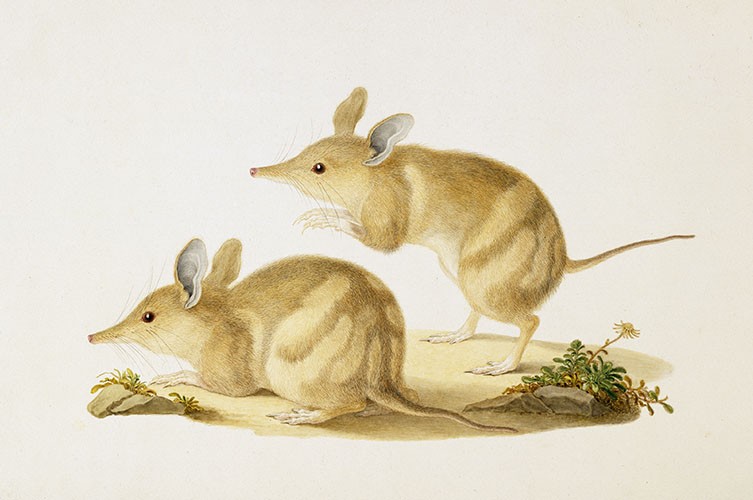
Artist Ferdinang Bauer
As naturalists began exploring the world, wildlife art evolved into a critical scientific tool. Artists were tasked with recording newly discovered species during the Age of Exploration, helping scientists and the public visualize creatures from previously uncharted territories.
Without photography, these illustrations were the primary source of visual documentation for new species.
These artistic depictions were not merely about beauty—they needed to be accurate representations, capturing every feather, scale, or claw with precision.
Today, wildlife scientific illustration is still cherished for its aesthetic appeal, but its role has expanded far beyond that. It’s now recognized as an essential part of scientific communication, education, and conservation.
Wildlife artists contribute to ecology, biology, and conservation efforts, using their skills to highlight endangered species, communicate scientific findings, and inspire environmental stewardship.
The Intersection of Art and Science
The relationship between art and science may seem unexpected, but in wildlife art, the two are inseparable. Art plays a crucial role in enhancing scientific understanding, especially in the field of biology. Where words and data can fall short, a well-crafted illustration can immediately convey complex ideas, patterns, and structures.
For example, in ecological studies, detailed illustrations of species interactions—such as pollination, predator-prey dynamics, or ecosystem webs—help scientists and the public grasp the intricacies of natural systems. Wildlife artists can visualize the relationships between species, their habitats, and environmental changes, offering a broader perspective that data alone may not fully capture.
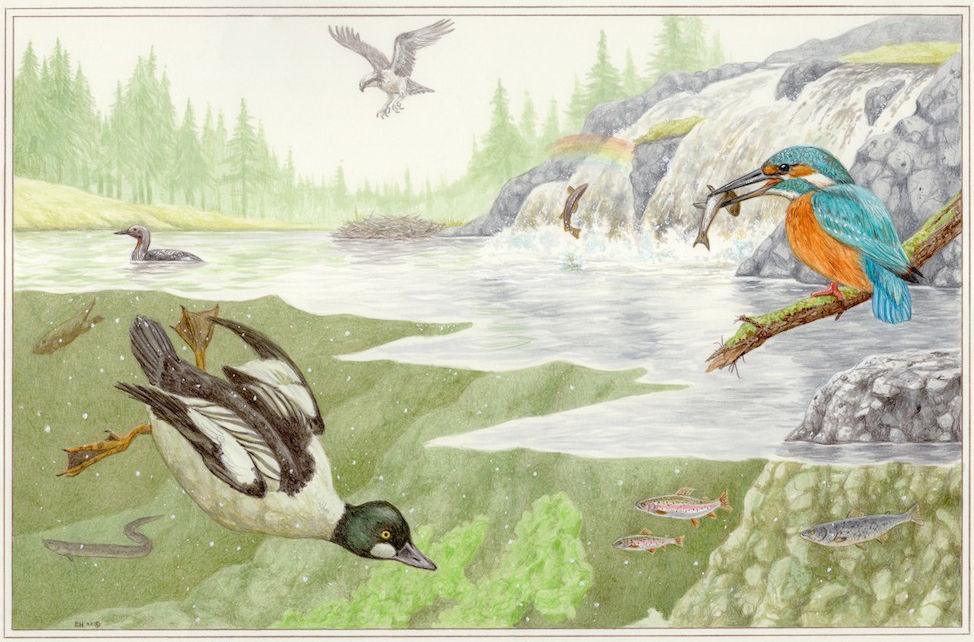
Illustration by scientific illustrator Esther van Hulsen
Artists and scientists often work hand in hand to produce these illustrations. Field biologists might collaborate with wildlife artists to ensure that every detail, from an animal’s fur texture to the plant life surrounding it, is accurate.
A prime example is Charles Darwin’s partnership with artists during his research on evolution. Without the meticulous illustrations that accompanied his groundbreaking work On the Origin of Species, it would have been much harder to communicate his revolutionary ideas to both scientists and the general public.

In today’s scientific community, wildlife artists continue to work closely with researchers, helping to document species, illustrate scientific papers, and create visual tools for conservation campaigns. These illustrations do more than just record data—they tell stories, bring species to life, and emotionally connect viewers to the natural world.

Artist Joris De Raedt with researcher Anna Schneider
By pursuing a career in wildlife drawing, you’re not just creating beautiful art — you’re contributing to science, education, and conservation efforts.
Your work could be the key to raising awareness about endangered species, visualizing groundbreaking ecological research, or inspiring future generations to appreciate and protect the natural world.
Wildlife art has the power to change the way we see and interact with nature, making it one of the most impactful fields of scientific illustration today.
CHAPTER 2
The Historical Impact of Wildlife Art on Natural Sciences
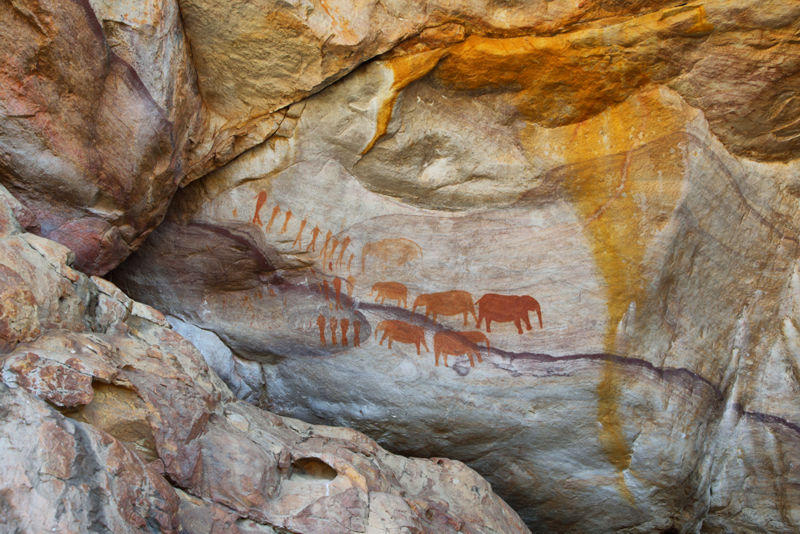
Bushman painting on a rock in Cederberg mountain.
The history of wildlife art can be traced back thousands of years to some of the earliest human civilizations. Ancient cave paintings, such as those found in Lascaux, France, dating back over 17,000 years, are some of the earliest examples of humans documenting the animals around them.
These images of horses, bison, and deer, while primitive, are believed to have served not only a ceremonial or spiritual purpose but also a functional one—providing a way to communicate important knowledge about the animals hunted by these early societies.
Moving forward in history, the Egyptians, Greeks, and Romans also played significant roles in the development of wildlife art, using it to record and understand their surroundings.
Egyptian art, for instance, often depicted animals with a high degree of accuracy, as seen in the detailed carvings and frescoes within tombs and temples.
These images were not just decorative; they documented the animals that were part of the Egyptians’ everyday lives, some of which held significant cultural or religious importance, such as the sacred ibis or the Nile crocodile.
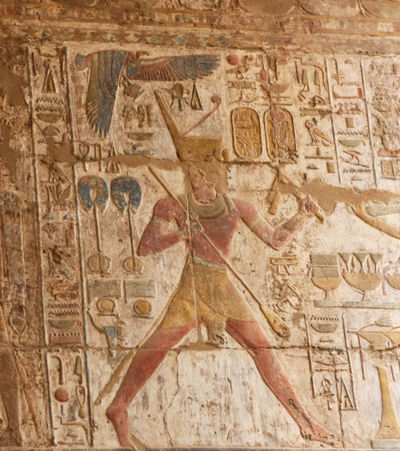
Walls of Karnak temple in Luxor.

In medieval Europe, wildlife art became closely intertwined with religious manuscripts.
The bestiary—a type of illustrated manuscript—was popular during the Middle Ages and featured both real and mythical creatures.
While some of the representations were fantastical, they nonetheless reflected the medieval view of the natural world and provided a foundation for more scientific approaches in later centuries.
These early depictions, though often symbolic, laid the groundwork for a deeper exploration of nature in the centuries that followed.
The Renaissance and the Birth of Scientific Illustration
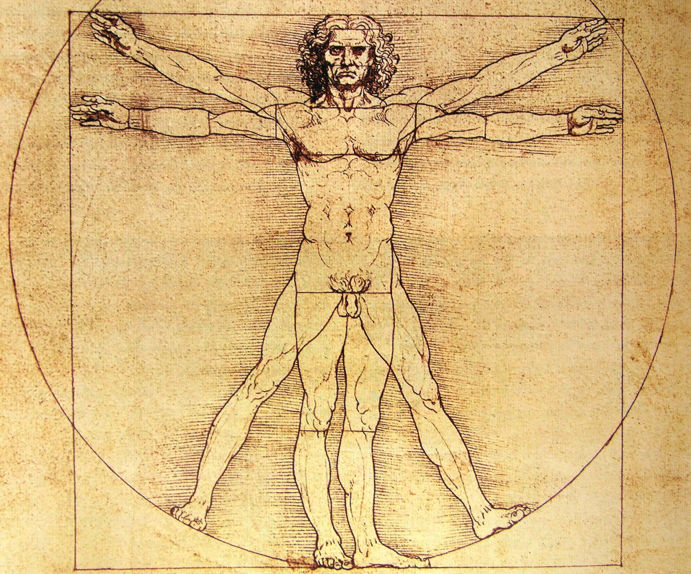
Leonardo da Vinci - vitruvian man
The Renaissance marked a turning point for wildlife art and its relationship with science. During this period, there was a renewed interest in the study of nature, fueled by advancements in anatomy, botany, and zoology. Artists and scientists began working more closely together, using art not only as a means of aesthetic expression but also as a tool for scientific documentation and discovery.
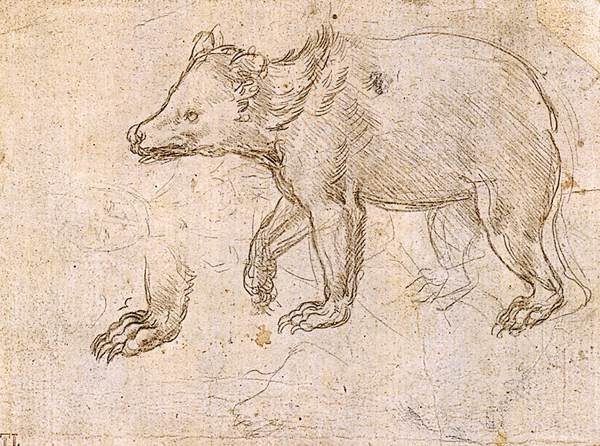
Leonardo da Vinci - wildlife sketch
One of the most notable figures of this era was Leonardo da Vinci. His sketches of animals, plants, and anatomy are legendary, blending artistic genius with scientific observation.
Da Vinci was fascinated by the natural world, and his detailed studies of birds in flight and horses in motion represent some of the earliest attempts to capture wildlife with anatomical accuracy.
His work laid the foundation for the emerging field of scientific illustration, where the goal was to depict the natural world in a way that could inform and educate.
Another key figure during the Renaissance was Albrecht Dürer, a German artist whose intricate woodcuts and watercolors of animals, insects, and plants set new standards for realism in wildlife art.
Dürer’s famous Young Hare (1502) and The Rhinoceros (1515) are exemplary of his ability to depict animals with a combination of artistic skill and scientific precision.
His work inspired future generations of artists to approach wildlife illustration with a more scientific mindset.

Dürer Young Hare (1502)
The rise of botanical gardens and natural history collections during the Renaissance also played a significant role in the birth of scientific illustration. These institutions provided artists with access to exotic species of plants and animals, fueling their curiosity and pushing them to create ever more accurate representations of the natural world. This era firmly established wildlife art as a vital component of scientific inquiry.
The Role of Wildlife Art in the Age of Exploration

The Age of Exploration (roughly the 15th to the 18th century) was a period of global discovery, and wildlife art played a pivotal role in documenting the new species and ecosystems that were encountered by explorers.
As European naturalists embarked on voyages to the Americas, Africa, Asia, and Australia, they were faced with an astonishing variety of plants and animals that had never been seen before in Europe. The need to catalog and study these new discoveries gave rise to a golden age of wildlife illustration.

Artist Maria Sibylla Merian
One of the most famous artists from this era was Maria Sibylla Merian, a pioneering naturalist and artist who traveled to Suriname in the late 1600s to study and document the local flora and fauna.
Her detailed illustrations of tropical insects and their life cycles were groundbreaking and helped to advance the study of entomology.
Merian’s work stands out not only for its scientific accuracy but also for its artistic beauty, capturing the vibrant colors and delicate details of the insects and plants she studied.
In the 18th century, Captain James Cook’s voyages to the Pacific brought wildlife artists like Sydney Parkinson and John Webber into the spotlight.
These artists accompanied Cook on his expeditions, tasked with creating accurate depictions of the strange and wonderful creatures they encountered, including the first illustrations of kangaroos and other Australian wildlife.
Their work helped to bring the exotic species of distant lands into European consciousness, sparking further scientific study and interest in natural history.
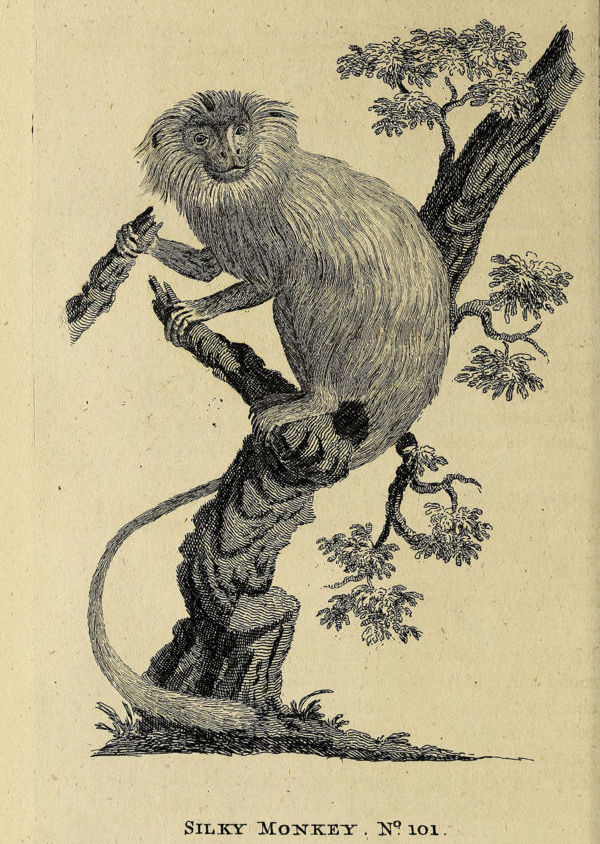
Artist Sydney Parkinson
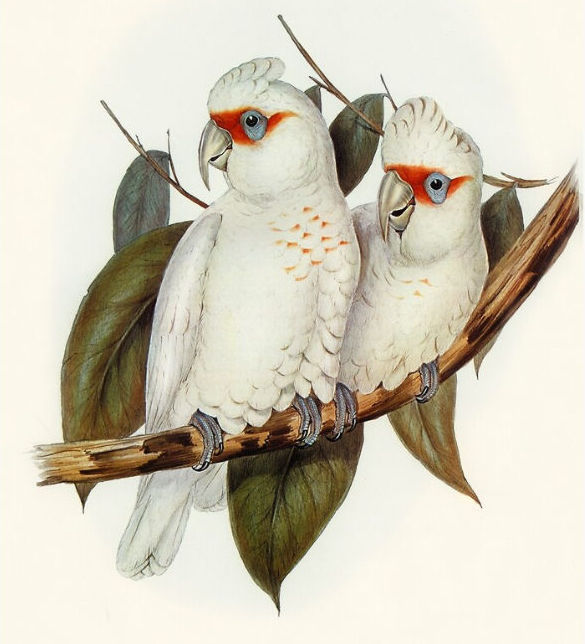
Artist Elizabeth Gould
One particularly remarkable figure from the Age of Exploration was Elizabeth Gould, a talented wildlife artist who made significant contributions to the field of ornithology in the 19th century.
Elizabeth worked alongside her husband, John Gould, a renowned ornithologist, producing exquisite illustrations of birds from around the world.
Although John is often credited with the discovery and documentation of many species, it was Elizabeth who meticulously drew and colored the birds that appeared in his publications.
Her detailed and lifelike illustrations were vital in documenting new species, particularly during the Goulds' travels to Australia, where they cataloged an extensive array of bird species, including the iconic hummingbirds and parrots.
The wildlife art created during the Age of Exploration served a dual purpose: it was both a scientific record and a way to share the wonders of the natural world with a broader audience. These illustrations provided Europeans with a window into distant ecosystems and helped to fuel the burgeoning field of natural sciences.
LIKE THIS ARTICLE?
YOU'LL 🧡 THE NEWSLETTER!
Get timely tips to improve your services, land more projects, illustration tips, and more...

CHAPTER 3
Wildlife Art as a Tool for Ecological Understanding
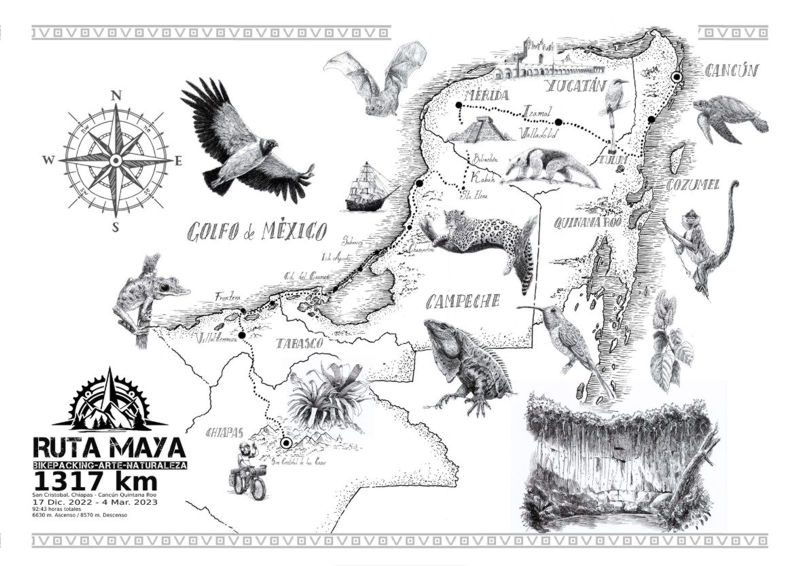
Scientific Illustrator Pavel Galvan
Wildlife art isn't just about capturing the beauty of animals—it plays a crucial role in understanding and communicating ecological concepts. By visualizing biodiversity, illustrating complex ecosystems, and aiding in species classification, wildlife artists contribute immensely to ecological research and education. In this section, we explore how wildlife art enhances our understanding of ecology and its importance in preserving the delicate balance of nature.
Visualizing Biodiversity
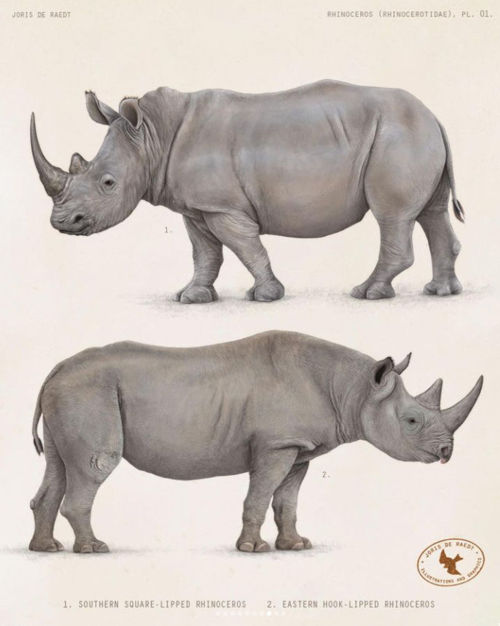
Scientific Illustrator Joris De Raedt
Biodiversity refers to the incredible variety of life found in a particular habitat or ecosystem, and it’s vital for the health of our planet.
However, understanding biodiversity isn’t always easy, especially when dealing with species that may look similar or inhabit difficult-to-reach areas.
This is where wildlife art becomes invaluable—it helps visualize and communicate the subtle variations between species that may otherwise go unnoticed.
Wildlife artists are trained to capture the nuances that make each species unique, whether it’s the slight differences in beak shapes among bird species or the varying color patterns on the wings of butterflies.
These visual distinctions are often critical for researchers who study how species adapt to their environments or how they evolve over time.
In some cases, wildlife art can also reveal biodiversity in remote or unexplored regions.
Artists like Maria Sibylla Merian, who documented the life cycles of tropical insects in the 17th century, provided some of the first visual records of species that were unknown to European science at the time.
Without her painstaking observations and illustrations, many of these species might have remained undiscovered for decades.
By visually cataloging species, wildlife art also makes biodiversity more accessible to the general public.
Scientific illustrations are often used in educational materials, museum exhibits, and field guides, helping people from all walks of life appreciate the incredible diversity of life on Earth.
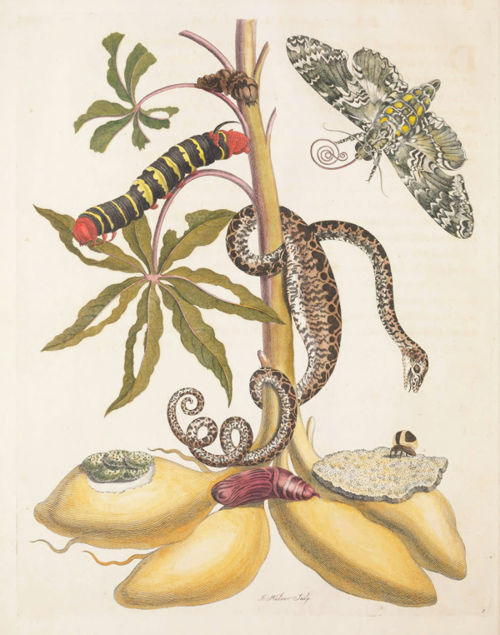
Artist Maria Sibylla Merian
This visual engagement can inspire people to take action in conservation efforts, as it creates a stronger connection to the species and ecosystems that need protection.
Art in Habitat Representation

Beaver Ecosystem by scientific illustrator Liz Bradford for Montana Outdoors Magazine
Ecosystems are intricate webs of life where every species plays a role in maintaining balance. One of the challenges of ecological study is understanding how different species interact within their habitats, and wildlife art has proven to be an essential tool for depicting these complex interconnections.
Through habitat representation, wildlife artists can bring entire ecosystems to life in a single illustration, helping scientists and the public visualize how species coexist.
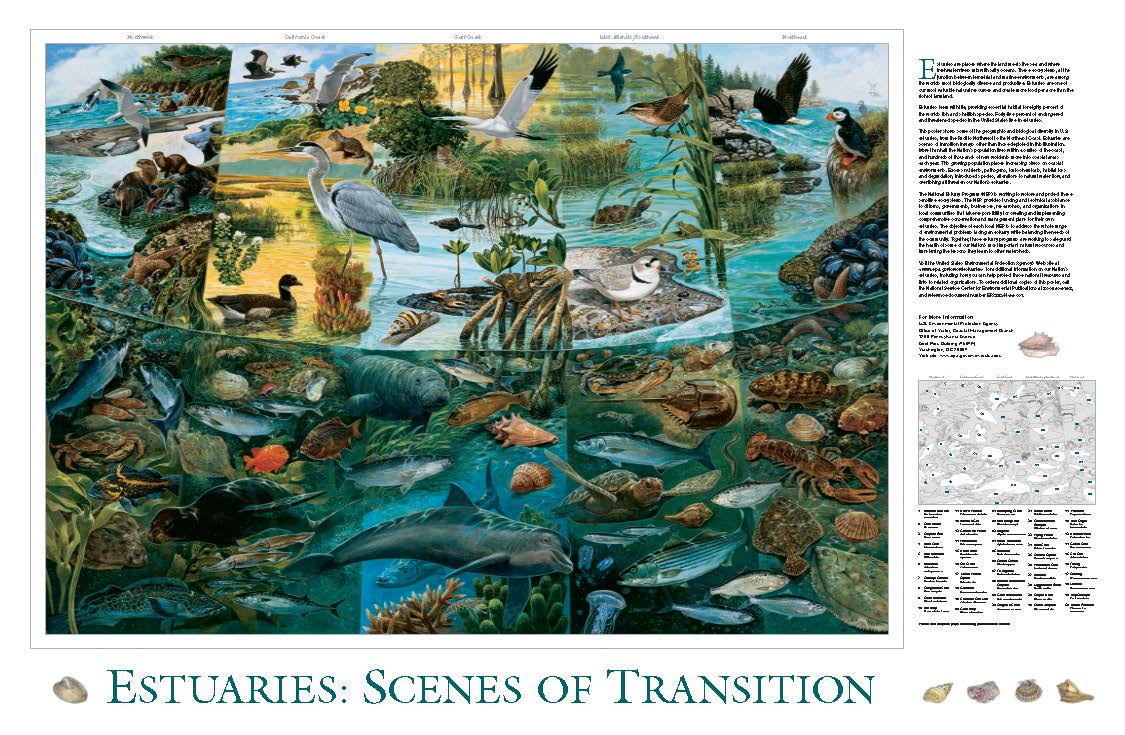
Estuaries: Scenes of Transition by John D. Dawson. Created for the U.S. Environmental Protection Agency.
For example, a wildlife illustration of a coastal ecosystem might show seabirds nesting on cliffs, crabs scuttling along the shoreline, fish swimming beneath the waves, and the intertidal plants and algae that support this web of life. This type of artwork not only highlights the diversity of species within an ecosystem but also demonstrates how they rely on each other and their environment to survive.
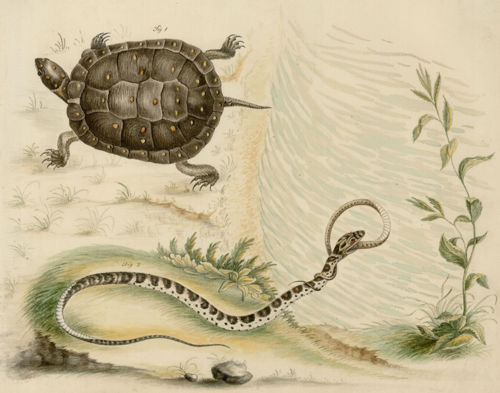
Artist William Bartram
Artists like William Bartram, an 18th-century naturalist and explorer, were masters of illustrating both species and their habitats.
His illustrations of American wildlife often depicted animals in their natural surroundings, offering a holistic view of ecosystems long before the term “ecology” was widely understood.
Bartram’s work helped scientists better understand the relationships between species and their environments, paving the way for modern ecological research.
Today, ecological restoration projects often rely on detailed wildlife illustrations to visualize how damaged habitats might look once restored. Artists collaborate with ecologists to create images of what an ecosystem could become with proper conservation efforts, such as reintroducing native species or restoring wetlands. These visuals are powerful tools in planning and advocating for environmental restoration projects, allowing people to see a hopeful vision of the future.
The Role of Art in Identifying Species
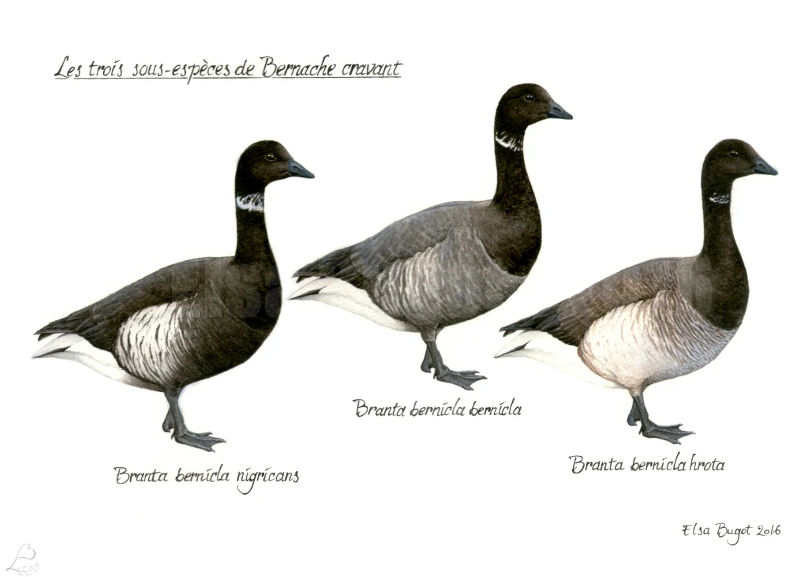
Scientific illustrator Elsa Bugot
Accurate species identification is a fundamental aspect of biology, taxonomy, and conservation, and wildlife artists play a key role in this process. Scientific illustrations are often more useful than photographs when it comes to identifying species because they can combine the ideal traits of an organism into a single, clear image.
Photographs may show an animal or plant in an unnatural pose or poor lighting, but illustrations highlight the most important features for easy identification. This is particularly important in taxonomy—the branch of science concerned with classification—where even the smallest visual difference can signal the discovery of a new species.
One of the most famous examples of wildlife art aiding species identification is the work of Pierre-Joseph Redouté, often referred to as the “Raphael of Flowers.”
His botanical illustrations were so precise that scientists used them to classify plants accurately.
Redouté’s work on roses, lilies, and other plants has had lasting scientific value, even centuries later.
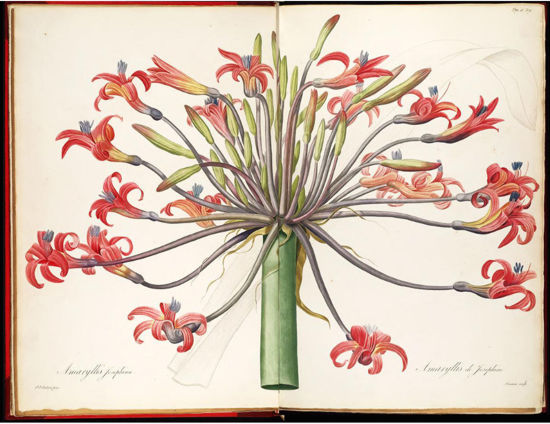
Artist Pierre-Joseph Redouté
Similarly, in ornithology, artists like Elizabeth Gould and John James Audubon produced illustrations that remain critical for bird identification.
Audubon’s The Birds of America, for example, not only documented the beauty of each species but also allowed ornithologists to study the distinct characteristics of different bird species, aiding classification efforts.
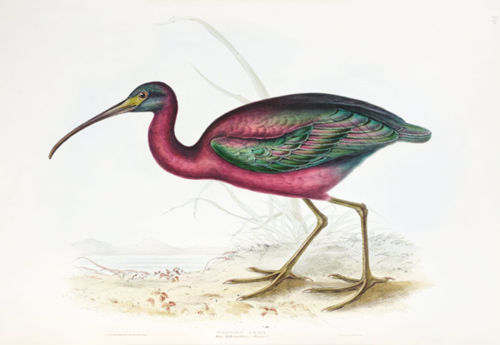
Artist Elizabeth Gould
In modern science, wildlife art continues to be a vital tool in species identification, especially as researchers work to classify newly discovered organisms or reclassify species based on new genetic data.
By focusing on key identifying features—whether it’s the unique pattern on a butterfly’s wings or the particular arrangement of scales on a fish—wildlife artists contribute to the ever-evolving field of taxonomy, ensuring that we continue to improve our understanding of the natural world.
Wildlife artist José Manuel Onrubia Baticón
CHAPTER 4
Wildlife Scientific Illustration and Conservation of Endangered Species
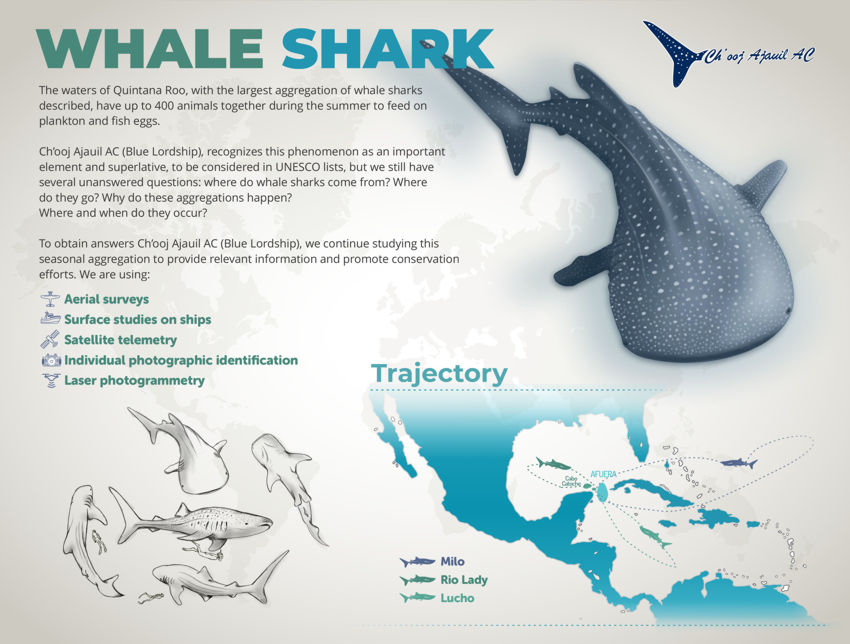
Infographic by scientific illustrator Alpha Del Bosque for biologist and whale shark conservationist Rafael de la Parra.
In the fight to protect endangered species, wildlife scientific illustration has emerged as a powerful tool, raising awareness, documenting declining species, and fueling conservation efforts.
Art has the unique ability to convey the urgency and beauty of the natural world, creating a deep emotional connection that encourages action. In this section, we explore how wildlife art contributes to the conservation of endangered species through awareness, advocacy, and documentation.
Raising Awareness Through Art
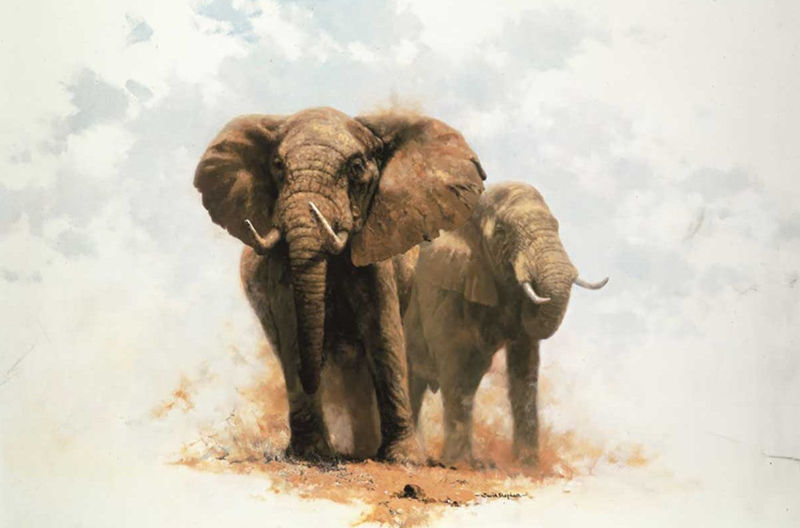
Art by David Shepard
Emotional Impact of Visual Storytelling
One of the most profound ways wildlife art supports conservation is by raising awareness through emotional storytelling. Art can capture the beauty, vulnerability, and personality of endangered species in ways that transcend words.
A well-crafted illustration of an endangered species—whether it's a majestic tiger or a critically endangered amphibian—can evoke empathy and inspire action like no statistic or fact sheet ever could.
Artists like Robert Bateman and David Shepherd are renowned for their wildlife paintings that do more than just depict animals; they tell stories.
Bateman, for instance, often paints animals in their natural habitats, but with a subtle sense of looming threat—whether it’s a snow leopard surrounded by a shrinking glacier or an African elephant wandering through a poached landscape.
His work not only highlights the species but also draws attention to the environmental pressures they face, urging viewers to consider the impact of human activity on wildlife.

Art by Robert Bateman
By evoking emotion and empathy, wildlife art can stimulate public support for conservation initiatives. Many people may feel disconnected from issues like habitat loss or poaching, but a beautifully illustrated animal in distress makes these problems personal.
This emotional connection often motivates people to donate, volunteer, or advocate for endangered species, making art a catalyst for change in conservation efforts.
Art in Conservation Campaigns
Case Studies of Successful Conservation Efforts Using Art
Wildlife art has been instrumental in several successful conservation campaigns, proving that creative visual representation can lead to real-world action. By leveraging the power of visual storytelling, artists and conservationists alike have inspired movements to protect vulnerable species.
One famous example is the Save the Whales campaign in the 1970s, which utilized iconic whale imagery to bring attention to the plight of these magnificent marine mammals.
Artists created stunning illustrations of whales that were used in posters, t-shirts, and other materials that helped the campaign gain momentum.
The emotional appeal of these images, coupled with growing environmental awareness, ultimately led to international agreements that significantly reduced commercial whaling and helped save several whale species from extinction.
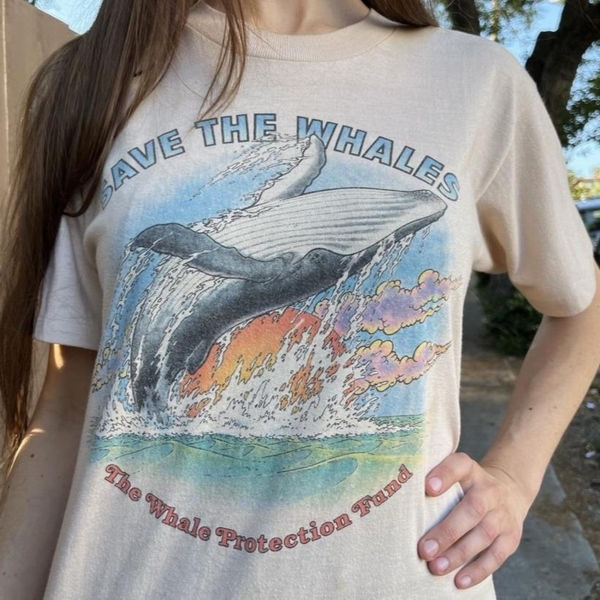
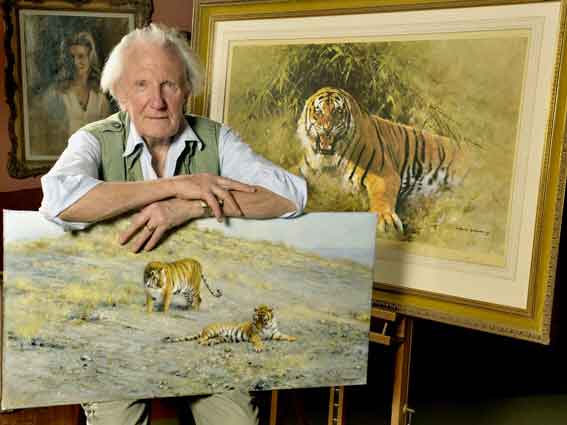
Tiger Fire by David Shepherd
Another impactful campaign involved the work of British artist David Shepherd, who became a prominent voice in the fight to protect African wildlife.
His painting Tiger Fire captured the majesty of tigers, raising both awareness and funds for conservation.
Shepherd founded the David Shepherd Wildlife Foundation, which has raised millions of dollars to support endangered species, with art playing a central role in fundraising efforts.
More recently, the Sketch for Survival initiative—a global art competition that encourages artists to submit wildlife sketches—has raised significant funds for conservation projects.
The program includes work from amateur and professional artists alike, with proceeds going directly to efforts that protect endangered animals and their habitats.
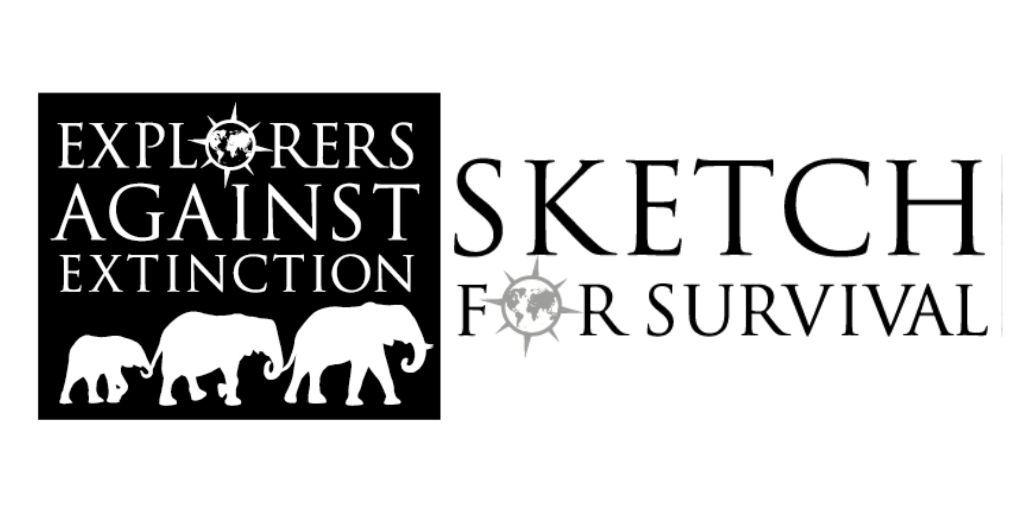
The auction of these pieces raises both awareness and financial support, showcasing how art continues to play a vital role in modern conservation campaigns.
Wildlife art doesn’t just serve to spread awareness; it provides a direct avenue for action. Conservation organizations frequently use artistic imagery in marketing materials, campaigns, and merchandise to inspire people to contribute to their causes.
Whether through iconic posters, limited-edition prints, or partnerships with wildlife artists, art serves as a bridge between awareness and tangible conservation outcomes.
Documenting Declining Species

Scientific Illustrator Esther van Hulsen
The Role of Art in Recording Species at Risk
Beyond raising awareness and funding conservation efforts, wildlife scientific illustration plays a crucial role in documenting species that are on the brink of extinction.
In many cases, illustrations may serve as the final record of species that disappear from the wild, capturing their likeness for future generations. This documentation not only preserves the memory of these species but also serves as a scientific record that helps researchers study and understand the causes of their decline.
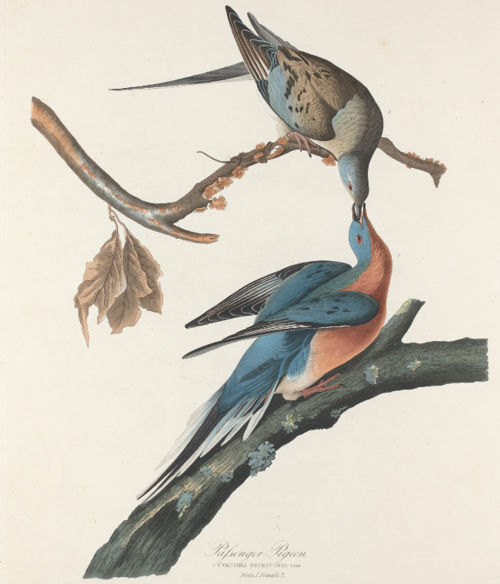
Artist John James Audubon
One of the most poignant examples of this is the documentation of the passenger pigeon.
Once one of the most abundant bird species in North America, the passenger pigeon became extinct in the early 20th century due to overhunting and habitat destruction.
Before the species disappeared, artists like John James Audubon meticulously recorded its appearance in illustrations.
These images now stand as the last remaining visual record of a species that once darkened the skies in vast flocks, serving as both a warning and a call to action for future conservation efforts.
In addition to documenting species visually, wildlife art also aids in recording the ecosystems and habitats these species rely on. As ecosystems change due to climate change, deforestation, and human development, artists can create a snapshot of what was once there, preserving a piece of history that may be lost.
In essence, wildlife scientific illustration serves as a bridge between the past and the present, documenting the species we are at risk of losing and providing a lasting legacy that encourages conservation action for future generations.
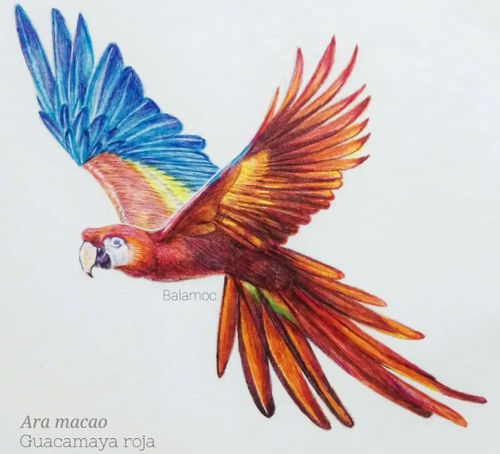
Scientific illustrator Balamoc
CHAPTER 5
The Role of Wildlife Scientific Illustration in Modern Ecology
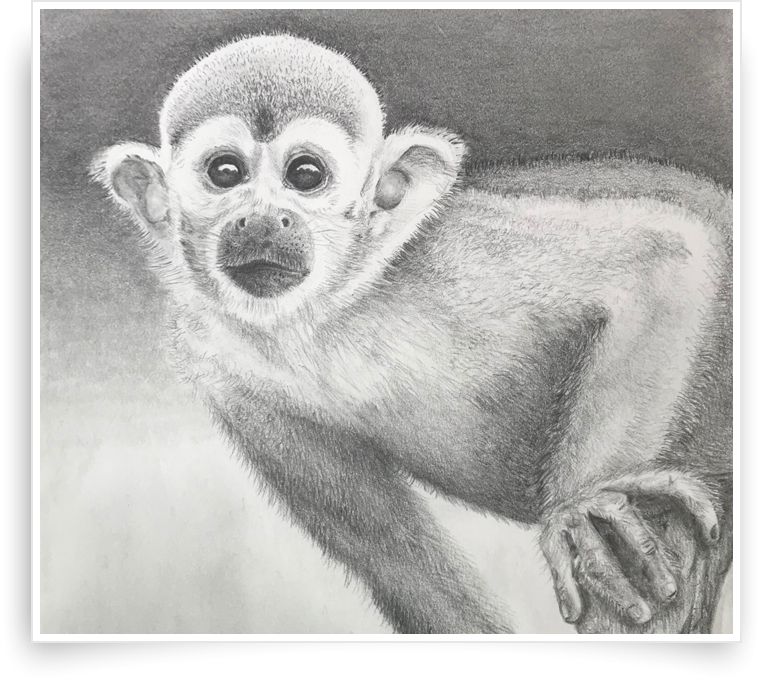
Scientific Illustrator Alpha Del Bosque
In today’s world, where ecosystems are under increasing pressure from human activity, wildlife scientific illustration continues to play a vital role in the field of ecology. Artists contribute to modern ecological studies by illustrating complex ecological interactions, visualizing environmental changes, and aiding in ecological restoration projects.
This section delves into how wildlife art remains a powerful tool for understanding and preserving the intricate web of life in the modern age.
Illustrating Ecological Interactions
Depicting Predator-Prey Relationships, Pollination, and More
Ecology is the study of interactions between organisms and their environment, and many of these interactions are best understood visually. Wildlife art excels in illustrating these complex relationships, making the invisible connections in nature visible and accessible.
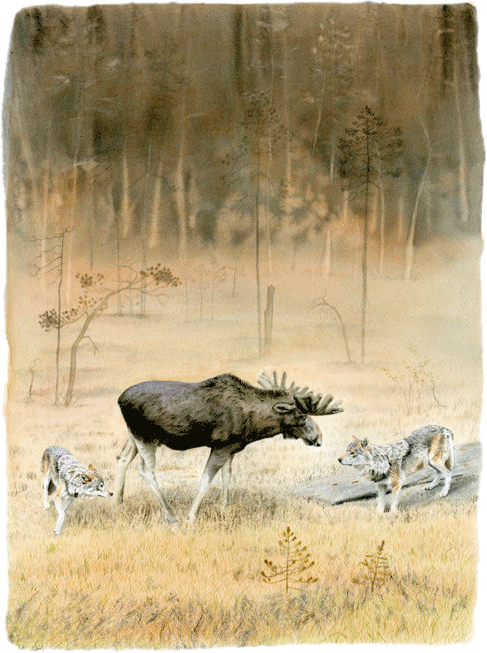
Wildlife artist Mikael Sunnerstrand
Artists can depict predator-prey dynamics, symbiotic relationships, and pollination processes in ways that are both scientifically accurate and artistically engaging.
For example, predator-prey relationships can be dramatically illustrated to show how species rely on each other for survival.
A well-known example is the depiction of wolves and their prey in various ecosystems. Illustrations of wolves hunting caribou or deer in a snowy landscape not only capture the drama of nature but also highlight the balance between predator and prey, essential for maintaining healthy populations.
Without predators, prey species can overpopulate, leading to habitat degradation, which in turn affects other species in the ecosystem.
Similarly, wildlife art can beautifully illustrate the process of pollination, where animals like bees, birds, and bats play a crucial role in transferring pollen between plants.
This interaction is critical for the reproduction of many flowering plants and the production of fruits and seeds.
Artists can capture the delicate moment when a bee hovers over a flower or a hummingbird feeds on nectar, showing how these small yet vital interactions are part of a larger ecological network.
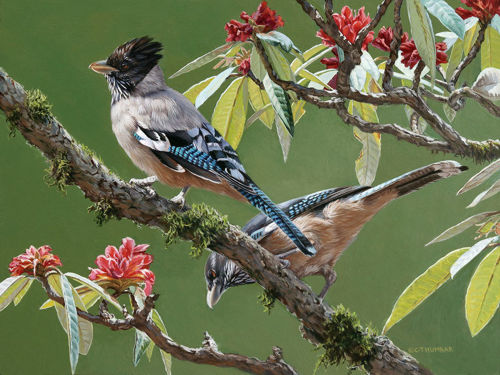
Wildlife artist Chirag Thumbar
Illustrations also provide a clear way to understand symbiotic relationships, like the one between clownfish and sea anemones.
By depicting both species together in their environment, artists help demonstrate how these organisms benefit each other, reinforcing the idea that no species exists in isolation.
These visualizations are essential for scientists, educators, and the public, as they simplify complex concepts and promote a deeper understanding of ecological relationships.
Art in Environmental Impact Assessments
How Illustrations Aid in Visualizing Environmental Changes
Environmental impact assessments (EIAs) are critical tools used by ecologists and conservationists to evaluate the potential effects of development projects—like highways, dams, or urban expansion—on the natural environment. Wildlife scientific illustration plays an important role in these assessments by visualizing the possible changes that development might bring, helping stakeholders understand the consequences of their actions on local ecosystems.
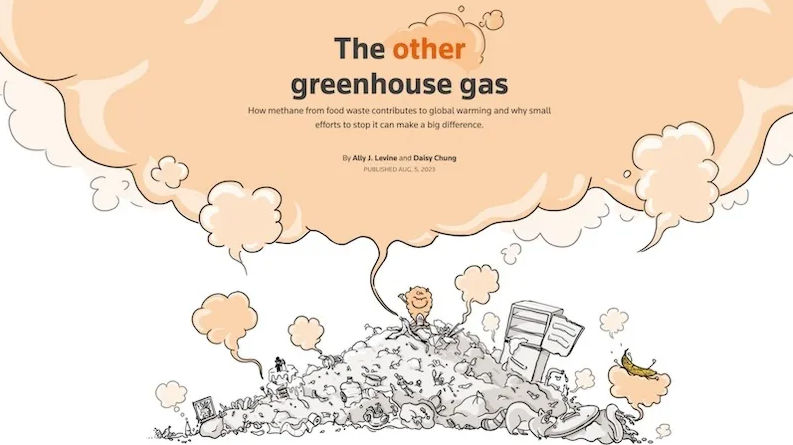
Scientific illustrator Daisy Chung
For example, when assessing the impact of greenhouse gases, carbon dioxide often takes center stage, but methane is another potent contributor to global warming. Scientific illustrators play a critical role in bringing attention to this often-overlooked gas by creating visuals that help explain its sources, impact, and solutions.
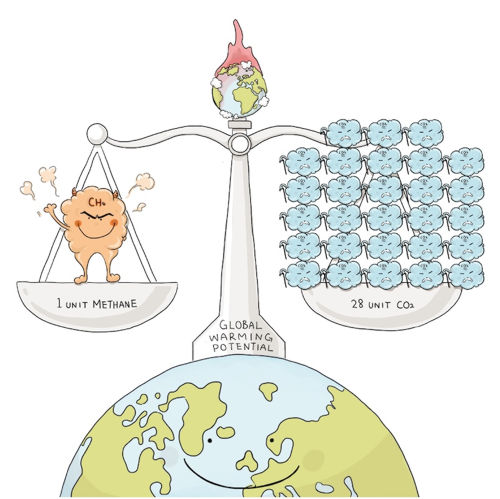
Scientific illustrator Daisy Chung
Illustrators can depict methane emissions from natural and human-related sources, showing how it seeps from agricultural fields, cattle, and industrial sites, or even from melting permafrost in the Arctic.
These illustrations can also highlight the efforts to reduce methane emissions, such as capturing it from landfills for energy use or improving livestock management practices.
By visualizing methane’s role in climate change, scientific illustrators make a complex issue easier to grasp, contributing to environmental education and encouraging actionable change.
The Role of Art in Ecological Restoration Projects
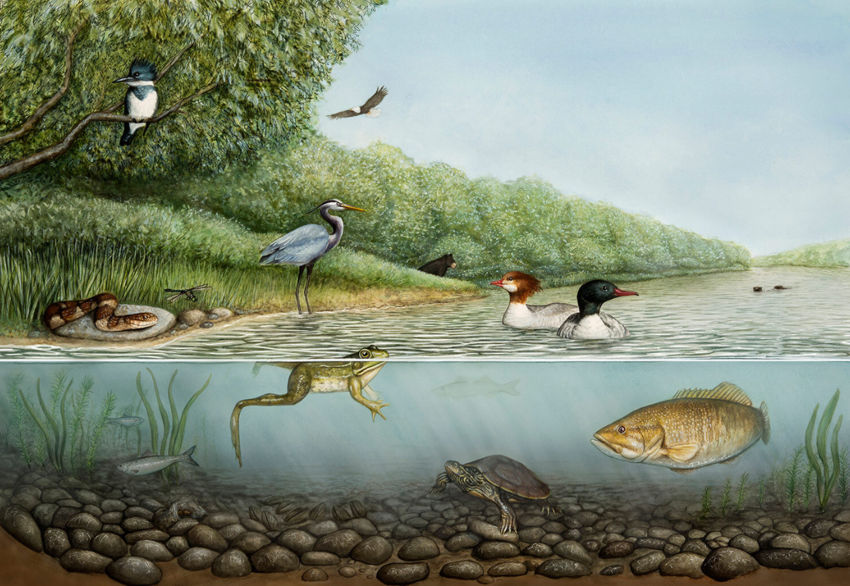
Scientific illustrator Liz Bradford
Using Art to Visualize and Communicate Restoration Goals
Ecological restoration aims to return damaged or degraded ecosystems to their natural state, and wildlife scientific illustration plays a crucial role in visualizing what a restored habitat could look like.
These illustrations are not just aesthetic; they serve as guides and motivators for both the restoration teams and the broader community involved in the projects.
One of the most powerful uses of art in restoration is in the creation of “visioning” illustrations. Before restoration begins, an artist may be asked to create an image of the desired end state of the project—whether it’s reforested land, a revived wetland, or a coral reef restored to health.
These illustrations are based on scientific data and research about the ecosystem’s historical state, but they also incorporate artistic imagination to show the potential beauty of the restored environment.
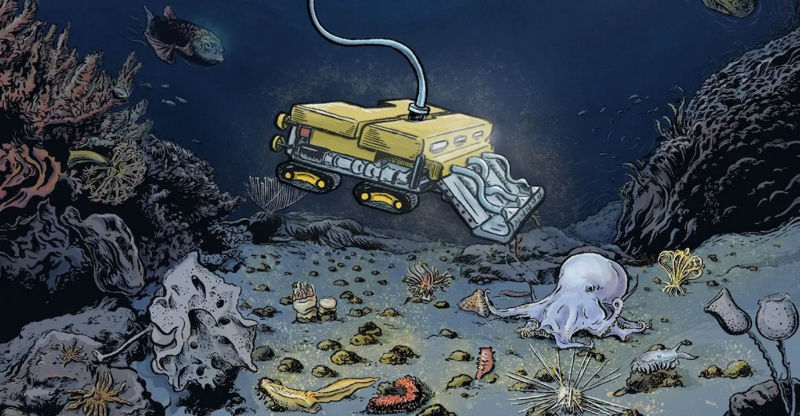
Scientific illustrator Daisy Chung
Also scientific illustrators play a vital role in raising awareness about environmental impact issues like deep sea mining by creating detailed, visual representations of this complex and controversial practice.
Deep sea mining involves extracting minerals like cobalt, nickel, and rare earth elements from the ocean floor, often in fragile, poorly understood ecosystems.
Through their artwork, scientific illustrators can visually communicate the potential environmental impacts of deep sea mining, such as habitat destruction, biodiversity loss, and disruption of the marine food chain.
These illustrations help make the invisible world of the deep ocean more accessible, educating the public and policymakers about the ecological risks and encouraging more informed, sustainable decision-making.
Conclusion
Wildlife art continues to be a powerful tool in modern ecology. From illustrating the intricate interactions between species to aiding in environmental impact assessments and restoration projects, art serves as a bridge between scientific knowledge and public understanding.
By making complex ecological concepts accessible and engaging, wildlife scientific illustrators inspire action and contribute to the preservation and restoration of our planet’s ecosystems. In the face of growing environmental challenges, wildlife art remains as relevant and vital as ever in the effort to sustain life on Earth.
CHAPTER 6
Wildlife Art in Education and Public Engagement
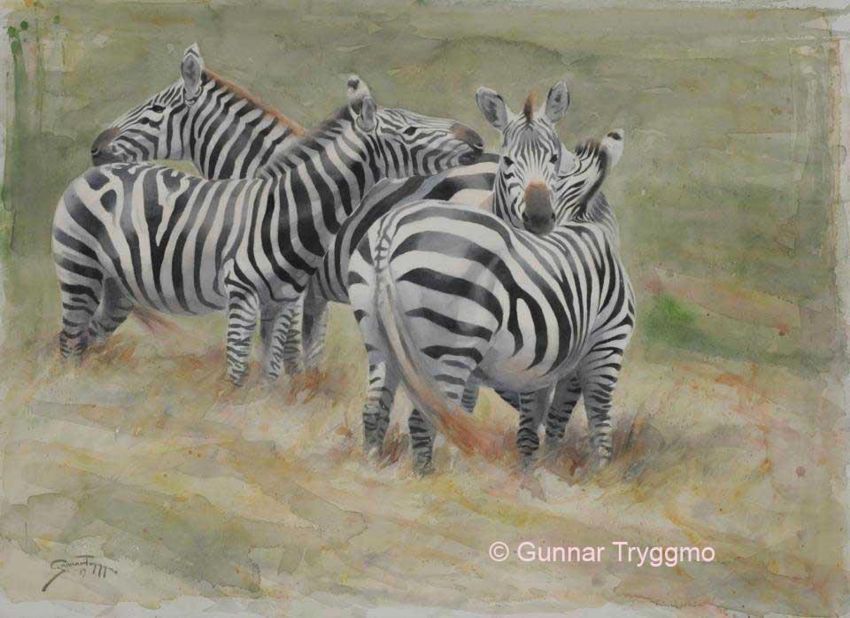
Wildlife artist Gunnar Tryggmo
Wildlife scientific illustration goes beyond its scientific and conservation functions; it serves as an important bridge to public engagement and education. Whether in classrooms, museums, or community projects, wildlife illustrations captivate audiences, making complex ecological concepts more relatable and memorable.
In this section, we explore how wildlife art is used as an educational tool, enhances public understanding of ecology, and even contributes to citizen science initiatives.
Art as an Educational Tool
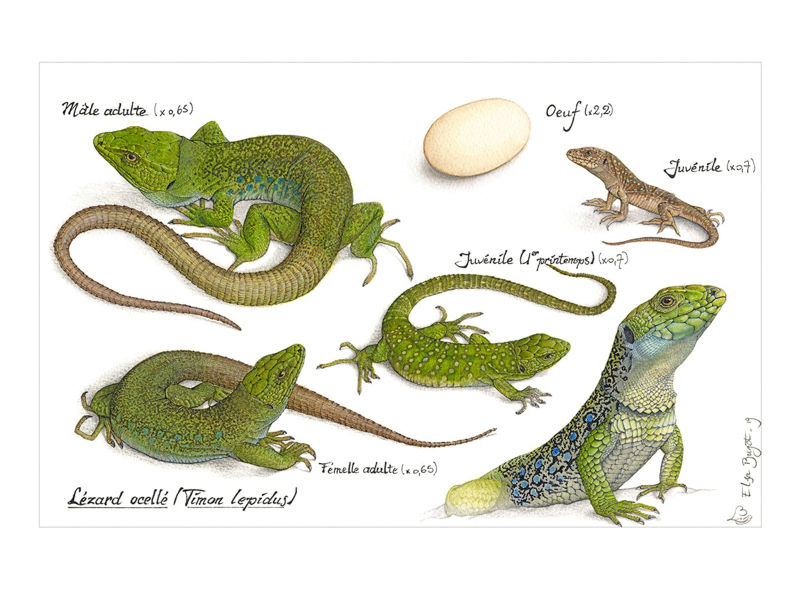
Scientific illustrator Elsa Bugot
Engaging Students with Visual Aids
In educational settings, wildlife scientific illustration offers an engaging way to introduce students to the world of ecology, biodiversity, and conservation. Visual learning is powerful; research has shown that people retain information more effectively when it’s presented through images alongside text. Wildlife illustrations allow students to connect with the subject matter in a way that words alone often cannot.
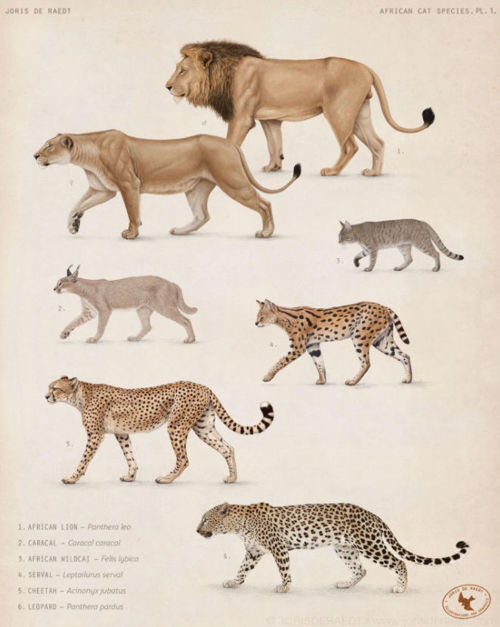
Scientific illustrator Joris De Raedt
Field guides are another excellent example of wildlife art as an educational tool.
These illustrated books have long been used in biology classes to teach students how to identify local flora and fauna.
For young naturalists, the colorful images of birds, insects, and plants not only aid in species identification but also spark curiosity and appreciation for the natural world.
By visually engaging students, wildlife art helps foster a lifelong interest in ecology and conservation.
Furthermore, wildlife art can be used in interactive classroom activities.
This hands-on approach encourages students to think critically about biodiversity, ecosystems, and environmental stewardship, making the learning experience both fun and educational.
Enhancing Public Understanding of Ecology
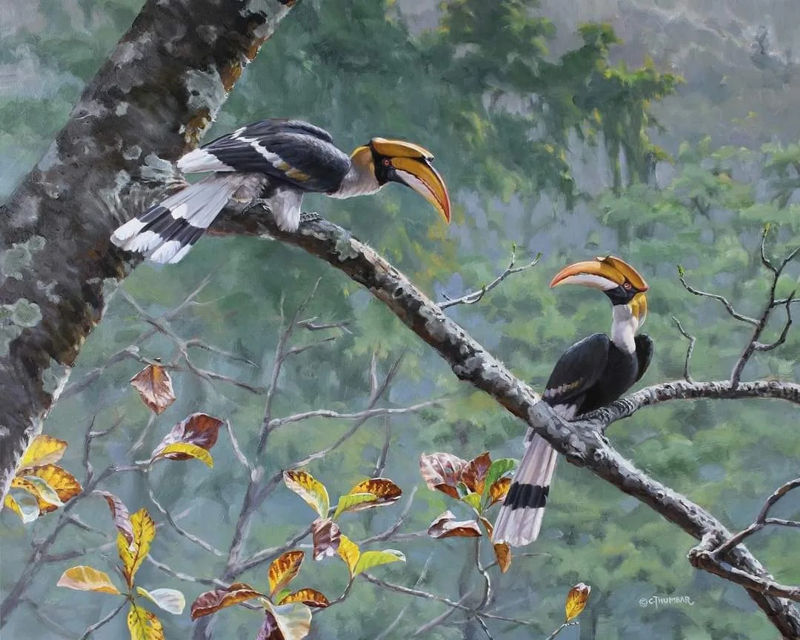
Wildlife artist Chirag Thumbar
Art in Museums, Books, and Media
Museums, documentaries, and books often rely on wildlife art to enhance public understanding of ecology and conservation issues. By combining visual art with factual information, these platforms are able to convey scientific concepts in a way that’s accessible to a broader audience.
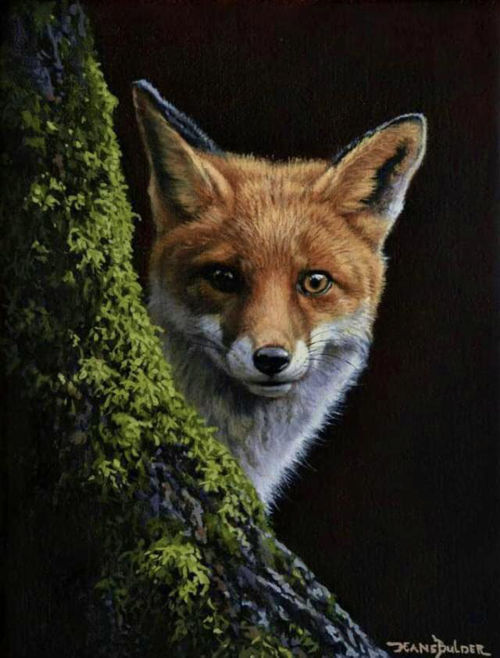
Wildlife artist Hans Bulder
In natural history museums, wildlife art plays a prominent role in exhibits.
Dioramas, featuring detailed, lifelike animal models in their habitats, are enhanced by background illustrations that depict the landscape, plants, and other animals in the ecosystem.
These illustrations help museum visitors visualize how different species interact with one another and their environments.
Without the aid of art, many of these complex ecological interactions would be difficult for the public to fully appreciate.
Books—especially field guides, children’s books, and wildlife conservation publications—also make great use of wildlife illustrations.
Wildlife documentaries, too, use wildlife art to visually support their narratives. Before modern advancements in video technology, many documentaries relied heavily on illustrations to depict rare or hard-to-capture wildlife.
Today, even with high-definition footage available, wildlife art is still used in animations or scientific reconstructions to explain concepts that are difficult to film, such as microscopic processes or historical ecosystems.
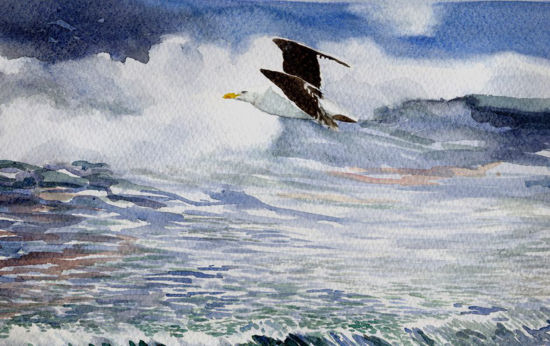
Wildlife artist María Calvo Díaz
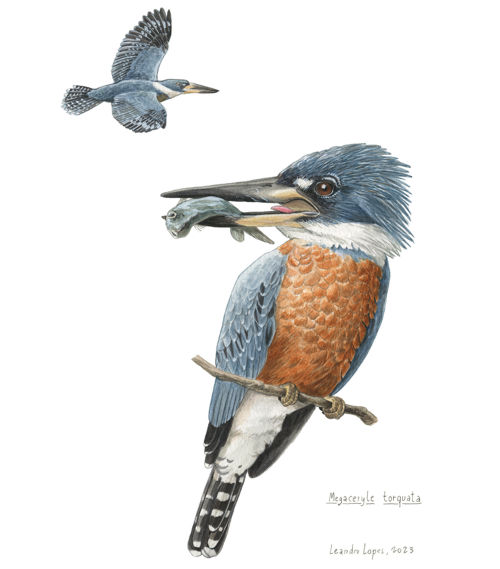
Natural Science illustrator Leandro Lopes
Scientific Illustrations in magazines and online media also contribute significantly to public engagement.
Whether it’s an infographic about endangered species in a wildlife magazine or an artist’s interpretation of extinct animals in an online article, art serves as a vehicle to communicate ecological and conservation issues in an approachable way.
Wildlife scientific illustration is an indispensable tool for engaging the public in ecological education. From classrooms to museums, books, and community science projects, art captures attention and communicates complex scientific ideas in ways that are accessible and compelling.
Whether sparking curiosity in students, deepening the public’s understanding of biodiversity, or guiding citizen scientists in the field, wildlife art continues to play a vital role in raising awareness and fostering a collective appreciation for the natural world.
CHAPTER 7
Inspiring the Next Generation of Wildlife Scientific Illustrators
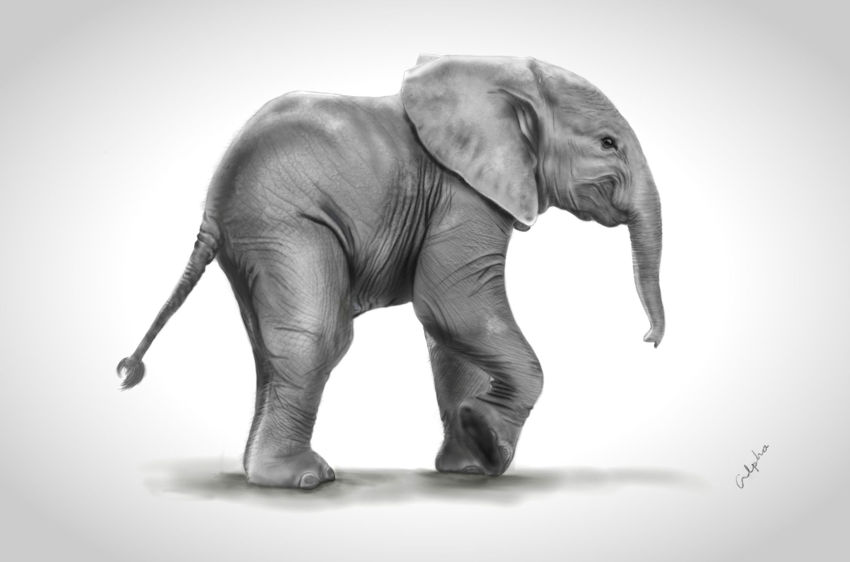
Scientific Illustrator Alpha Del Bosque
The future of wildlife art depends on inspiring and educating the next generation of scientific illustrators. With growing environmental challenges, young artists are being called upon to use their talents to advocate for nature and contribute to conservation efforts.
Programs, workshops, and mentorship opportunities are helping to cultivate the next wave of wildlife artists, ensuring that the field continues to thrive.Art schools and universities are increasingly offering courses that focus on wildlife and scientific illustration, blending traditional art techniques with modern ecological knowledge.
These programs not only teach students how to accurately depict animals and their habitats but also instill in them a deep understanding of the environmental issues facing the natural world. Students are encouraged to use their art as a platform for advocacy, learning how to communicate scientific information in a way that resonates with the public.
Mentorship programs, where established wildlife artists take on apprentices or students, are also helping to pass down skills and knowledge.
These relationships provide young artists with valuable insights into the technical aspects of wildlife illustration, as well as guidance on how to navigate the world of conservation art.
Many of these mentorships also include opportunities for fieldwork, allowing young artists to observe wildlife in their natural habitats and gain inspiration for their own work.
Moreover, competitions and exhibitions for young wildlife artists are providing a platform for emerging talent.
Organizations like the David Shepherd Wildlife Foundation and Wildlife Artist of the Year offer opportunities for young artists to showcase their work, gain recognition, and even raise funds for conservation causes.
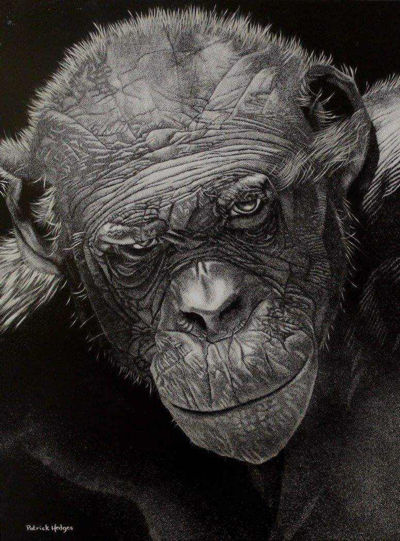
Patrick Hedges - Bonobo Pan
These events not only highlight the importance of wildlife art but also encourage young scientific illustrators to think critically about their role in conservation.
As more young people are drawn to the field, the future of wildlife art looks bright. With a new generation of artists equipped with both technical skills and a passion for conservation, the impact of wildlife art on natural sciences and environmental advocacy is set to grow.
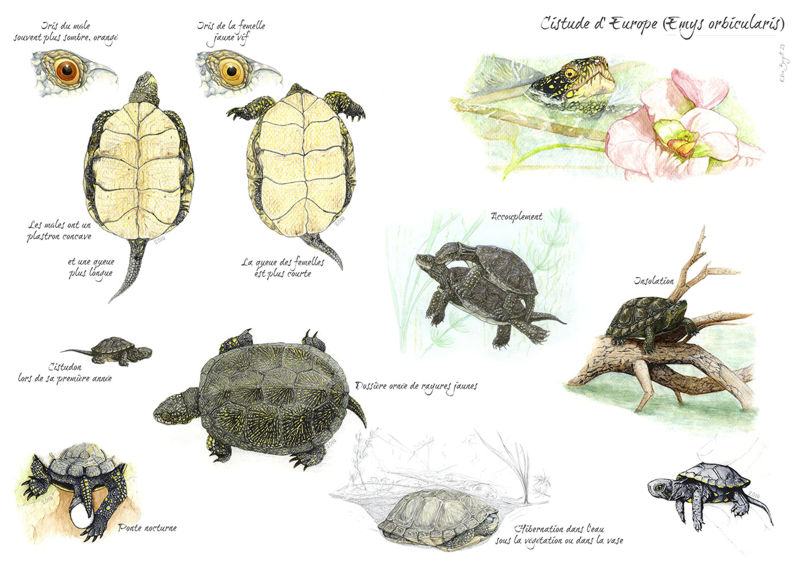
Scientific illustrator Elsa Bugot
Conclusion
The future of wildlife art is intertwined with the evolving needs of natural sciences and conservation efforts. Emerging technologies, increasing collaboration with conservationists, and the inspiration of a new generation of artists ensure that wildlife art will continue to be a powerful force in preserving biodiversity. As we look ahead, the contributions of wildlife artists will play an ever more significant role in protecting the planet's ecosystems and inspiring others to do the same.
MORE
ARTICLES
Thank you for taking the time to read this article! We hope you found the information insightful and inspiring. If you enjoyed learning about the fascinating world of wildlife art and its role in science and conservation, we encourage you to save our site in your bookmarks for future visits.
And if you think others would benefit from this content, please feel free to share it with your friends and colleagues. Your support helps us continue spreading the word about the incredible impact of wildlife art.
Here are some more articles that may interest you:
Scientific Illustrations Specialties
Exploring the significance and artistry of paleoart in visualizing prehistoric life and promoting scientific understanding.

Bird Art
Scientific illustration, especially bird drawing, plays a pivotal role in ornithology and scientific understanding.
Copyright ©2024 The Scientific Illustrator | All Rights Reserved
Privacy Policy | Terms & Disclaimers | DMCA